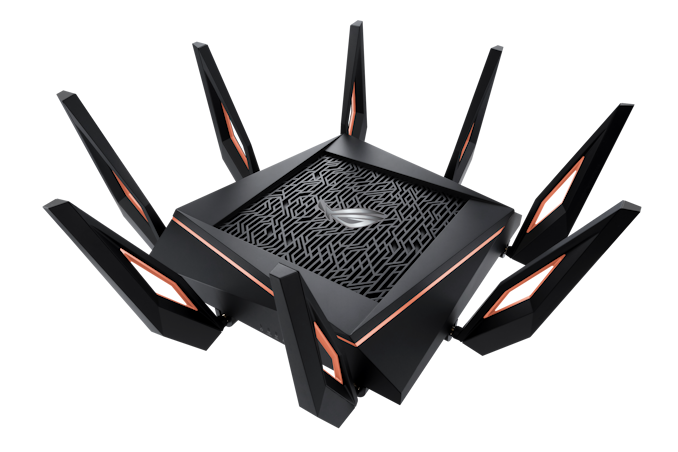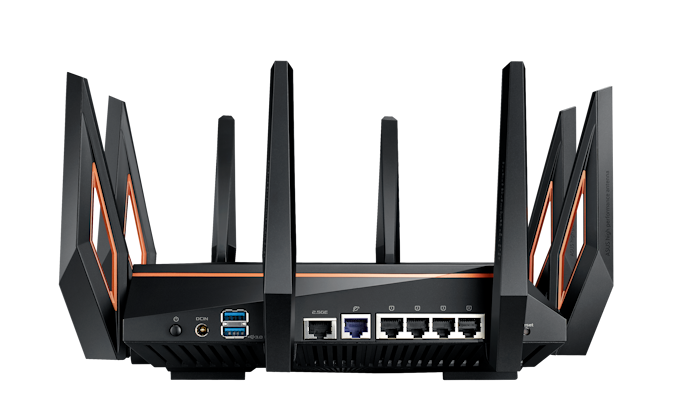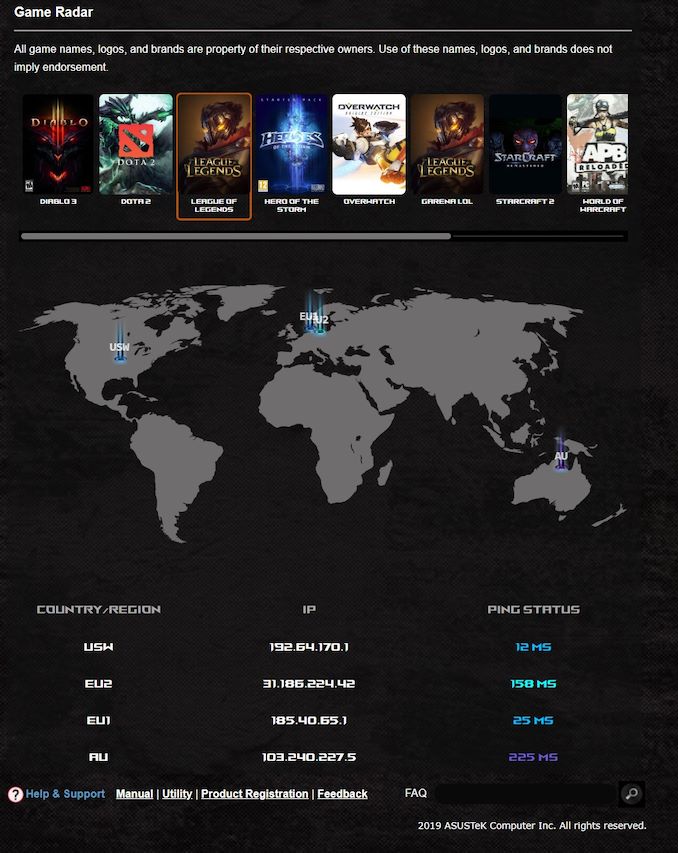AT 101: Wi-Fi 6 And Why You Want It
by Brett Howse on February 12, 2020 8:00 AM ESTThe 2020 AnandTech Wi-Fi Test Bed
We’ve been comfortably using Wi-Fi 5 for some time now, and it is only in the last several months that laptops have been shipping with Wi-Fi 6 based networking, mostly thanks to Intel’s Project Athena which has a requirement of the Intel AX200 Wi-Fi module, which is Intel's first Wi-Fi 6 based module on the market. Previously almost all shipping laptop computers offered Wi-Fi 5, and even a few with the latest Intel wireless adapters such as the Wireless-AC 9260 offered the advanced Wi-Fi 5 options such as 160 Mhz channel width, and MU-MIMO, so its nice to see a move to a new standard which includes these benefits across the board.
Although there are now quite a few Wi-Fi 6 routers and access points on the market, we had some specific criteria to meet. The router had to support Wi-Fi 6, and the 160 MHz channels, but because we are testing for performance, and not for capacity, we need an access point with a multi-Gigabit Ethernet connection. A typical laptop with a 2x2:2 network connection will be connecting to the access point at 2.4 Gbps, so transferring files from Ethernet over Gigabit will be a bottleneck. This does limit the selection somewhat.
After evaluating several models, we decided on the ASUS ROG Rapture GT-AX11000. The name is a mouthful, but meets all of our criteria and more. Most importantly, it offers the coveted 2.5 GbE port.
The ASUS ROG Rapture GT-AX11000
As the name implies, this router from ASUS can support up to 11000 Mbps over wireless, thanks to the 4x4 2.4 GHz, offering 1148 Mbps, and the two 4x4 5 GHz networks each offering 4804 Mbps. This adds up to just under 11000 Mbps, although with wireless the maximum connection speed is pretty much impossible to achieve. With the two separate 5 GHz networks, you can easily split off your consumption devices with higher priority devices, reducing interference on each network.
On the Wide Area Network (WAN) side there is a single 1 Gbps connection, and on the Local Area Network (LAN) side there are four 1 GbE and the single 2.5 GbE connection.
This router is built for capacity, with eight external antennae, and being a gaming router it also offers plenty of RGB lighting options. For those that don’t need the lighting, it can be turned off. ASUS also some tools to change the priority of gaming packets to reduce latency, assuming your network is that busy, and specifically prioritizes traffic from other ROG devices to make setup as easy as possible. ASUS even includes a utility to ping the various game servers for popular multiplayer games to provide you a map of latency to each one.
The GT-AX11000 also integrates with the ASUS AiMesh networking equipment to provide a whole-home mesh network, if even a router of this size can’t cover the entire house, either due to size or building materials blocking the signal.
For testing, the router is used in the access point mode, with the LAN connecting being over the 1 Gbps Ethernet, and a server connected directly to the router in the 2.5 Gbps port.













149 Comments
View All Comments
Nokiya Cheruhone - Wednesday, February 12, 2020 - link
Can't these things not look like turds?WiFi hardware is supposed to blend in the environment. Why does nobody produce a successor to the AirPort Extreme line that has secure firmware and high performance. Miss those days where you could simply buy an AirPort and it would be the most secure and least ugly solution.
ABR - Wednesday, February 12, 2020 - link
I was running an AEBS from 2009 until a few weeks ago. Last month I got a firmware update for it from Apple.Dug - Wednesday, February 12, 2020 - link
I agree. Netgear Orbi isn't bad though. Just too expensive at $650-700 for two units.Nokiya Cheruhone - Wednesday, February 12, 2020 - link
I have a thought that every vendor nowadays kinda treats firmware updates and security over the lifetime of the product like an afterthought, it's not even easy to compare these vendors because most consumers wouldn't care too much (or even know that there is something like embedded firmware in the first place).Nokiya Cheruhone - Wednesday, February 12, 2020 - link
How was your experience with Netgear devices?Makaveli - Wednesday, February 12, 2020 - link
I will only use Netgear router if I can load Asus merlin on it lol.They are slow at patching exploits and the stock firmware isn't great.
Makaveli - Wednesday, February 12, 2020 - link
And this is why I like Asus hardware that support Merlin firmware.He often release updates for exploits before even Asus can for the stock firmware.
I've been using Merlin firmware for 4+ years now on various routers and his timely updates is what has kept me there.
Makaveli - Wednesday, February 12, 2020 - link
Agreed with you here boss I hate the spider looking routers.name99 - Thursday, February 13, 2020 - link
The closest to the Apple experience these days appears to be Amplifi, the home version of Ubiqiti. Same aesthetics, ease of use, mostly bullet-proof. (And same lack of interest in weird tweaks and claims of things that are supposed to improve games or whatever, but mostly don’t work.)They released an ax box maybe six weeks ago. I don’t have direct experience with it, but their ac box has been mostly trouble-free for me.
vFunct - Wednesday, February 12, 2020 - link
No latency measurements?